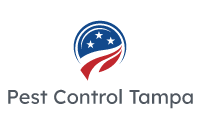Sure, here’s a brief introduction for your blog post on «What do household termites look like?» in English:
«Are you wondering what those tiny pests crawling around your home are? In this article, we will explore the appearance of household termites. Understanding their physical characteristics is crucial in identifying and dealing with an infestation effectively. Let’s dive into the world of these destructive insects and learn how to spot them!»
What are the physical characteristics of household termites in Pest Control Tampa?
Frequent questions
What are the physical characteristics of household termites found in Tampa?
Household termites in Tampa are typically referred to as subterranean termites. These termites are small, social insects that live in large colonies underground. They are typically pale or light brown in color and have soft bodies.
Workers are the most common type of termite found in households. They are about 1/8 inch long, have no wings, and are responsible for the damage caused by termites as they feed on wood and cellulose materials.
Soldiers, another type of termite, are around the same size as workers but have larger heads and powerful jaws for defending the colony against predators.
Reproductives, also known as swarmers or alates, are the largest termites in the colony. They have two pairs of wings and are responsible for establishing new colonies. However, they are not as commonly seen as workers and soldiers.
It’s important to note that identifying the specific species of termites is best left to professionals in the field of pest control.
How can I identify household termites by their appearance in the Tampa area?
In the Tampa area, it can be challenging to identify household termites by their appearance alone as they are often hidden within the structures of homes. However, there are some signs and characteristics that can help you determine if you have a termite infestation.
1. Swarmers: Termite swarmers are reproductive termites that are responsible for starting new colonies. They have straight, bead-like antennae, a thick waist, and two pairs of equally-sized wings. These wings are typically longer than their body length and have a clear, vein-like pattern.
2. Worker Termites: The majority of termites in a colony are workers. They are usually pale in color and have soft bodies. They do not have wings and are blind. Worker termites are rarely seen as they remain hidden within the wood or soil.
3. Soldier Termites: Soldier termites have similar physical characteristics to worker termites but with some distinct differences. They have large, dark, and hard heads with strong jaws. These soldier termites are responsible for defending the colony.
4. Mud Tubes: Subterranean termites, which are common in Tampa, build mud tubes as protective tunnels between their nest and food sources. These tubes are made of soil, saliva, and feces. If you notice these pencil-thin tubes on your walls, foundation, or other wooden structures, it can indicate a termite infestation.
5. Wood Damage: Termites feed on cellulose found in wood, causing damage to structures. Look for hollow-sounding wood, blistering or peeling paint, and wood that appears damaged or weakened.
If you suspect a termite infestation in your Tampa home, it is advisable to contact a professional pest control service specialized in termite control. They have the knowledge, experience, and tools to accurately identify the type of termites and provide effective treatment options.
What are the distinguishing features of termites commonly found in Tampa households?
Termites commonly found in Tampa households belong to the species known as Eastern Subterranean Termites (Reticulitermes flavipes). These termites are often responsible for causing significant damage to wooden structures in homes and buildings.
Here are some distinguishing features of Eastern Subterranean Termites:
1. Size: Adult termites are typically small, measuring about 1/8 to 3/8 inch long.
2. Color: They have a creamy white or pale color, making them blend in with wood or soil.
3. Winged Reproductives: During the spring season, winged reproductives, known as swarmers, emerge from colonies to start new ones. These swarmers have dark bodies with opaque wings.
4. Worker Termites: The majority of the termite colony consists of worker termites. They are the smallest in size and have soft bodies.
5. Mud Tubes: Eastern Subterranean Termites build mud tubes to establish their colonies and protect themselves from exposure. These tubes can be found on exterior surfaces of foundations, walls, and other wooden structures.
6. Wood Damage: Infestations by Eastern Subterranean Termites often result in extensive damage to wooden structures, including floors, walls, and furniture.
If you suspect a termite infestation in your Tampa household, it is crucial to contact a professional pest control service specializing in termite extermination. Early detection and treatment are key to minimizing potential damage caused by these destructive pests.
In conclusion, it is important for homeowners in Tampa to be able to identify household termites properly. While these destructive pests may not be easily noticeable during their early stages, it is crucial to be aware of their appearance in order to take prompt action. Remember that termites typically have a soft body, straight antennae, and are usually pale or translucent in color. Additionally, pay attention to discarded wings near windows or light sources, as this could indicate the presence of a termite swarm. By being vigilant and seeking professional Pest Control Tampa services when necessary, homeowners can protect their properties from the damaging effects of termites.
